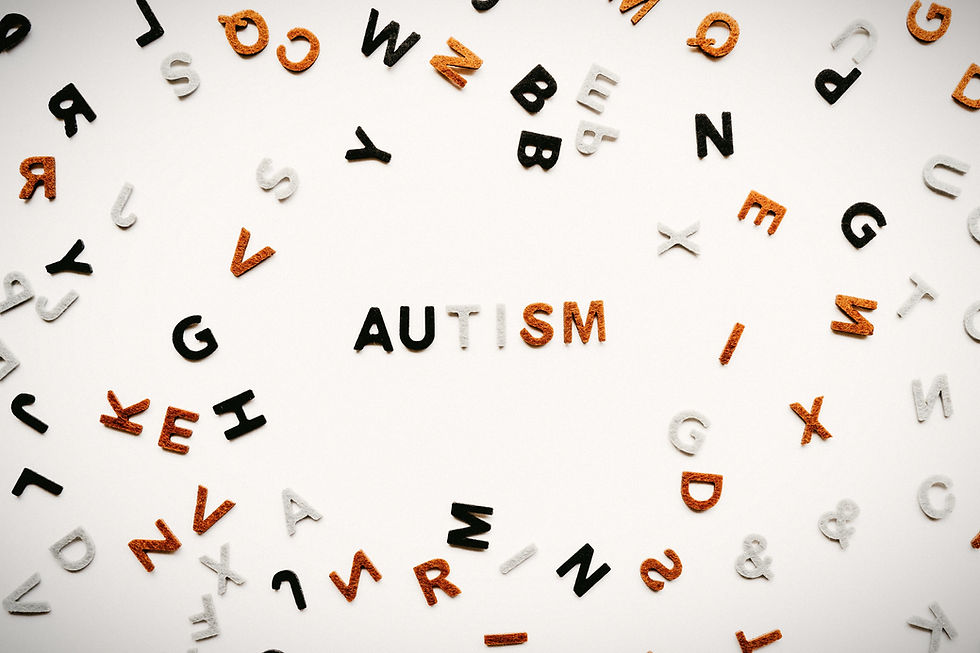Supporting a Loved One with BPD: Boundaries, Connection, and Compassion
- emmaflick3

- Jul 9, 2025
- 3 min read

Living with or caring for someone with Borderline Personality Disorder (BPD) can be deeply challenging — and deeply humanizing. BPD is often misunderstood, and the people who live with it are frequently stigmatized. But behind the diagnosis is a person longing for safety, connection, and stability.
BPD in a Nutshell
Borderline Personality Disorder (BPD) is a long-term mental-health condition marked by intense emotions, unstable relationships, fear of abandonment, and impulsive or self-harming behaviour. While its exact cause is still being mapped, research points to a mix of genetic vulnerability, early attachment trauma, and neurobiological differences in emotion-regulation circuits. The good news: long-term therapy—especially Dialectical Behaviour Therapy (DBT), Mentalization-Based Treatment (MBT) and Transference-Focused Psychotherapy (TFP)—can significantly reduce symptoms and self-harm risk, and many people achieve sustained remission with the right support.
BPD symptoms play out most painfully in close relationships. Healthy, predictable boundaries at home are protective, while chaotic ones can amplify distress. Whether you're a family member, caregiver, or friend, your support can make a meaningful difference — not by “fixing” your loved one, but by learning how to stay grounded, compassionate, and connected while protecting your own emotional well-being. Here’s how.
1. Learn to Set Boundaries Without Guilt
Boundaries are not punishments. They are the foundation for healthy, respectful relationships. When supporting someone with BPD, clear and consistent boundaries help both of you feel safer.
Be direct and kind when expressing your limits.
Stay consistent. Bending your boundaries in the moment can create confusion or reinforce patterns you’re trying to shift.
Hold space for their reaction. BPD can amplify feelings of rejection or abandonment. Expect emotional responses, but stay steady and compassionate.
Remember: holding a boundary doesn’t mean withdrawing love — it means maintaining respect for both of you.
2. Prioritize Connection, Even When It’s Hard
Many individuals with BPD struggle with intense fears of abandonment and emotional dysregulation. Maintaining connection — even during conflict — helps counteract these fears.
Use co-regulation techniques like calm tone, validation, or gentle presence to help de-escalate tension.
Validate feelings without agreeing with destructive behaviors. “I can see that you’re really hurting right now” goes a long way.
Don’t make love or care conditional. But do make access to you conditional on respectful behavior.
When people with BPD feel seen and accepted, it becomes easier for them to practice self-regulation over time.
3. Compassion Without Codependence
It’s easy to get pulled into the emotional storm — especially if your loved one experiences emotional extremes. Compassion is essential, but not at the cost of your own health.
Notice when you’re absorbing emotional responsibility that isn’t yours.
Seek your own support. You don’t have to carry this alone.
Celebrate progress in small steps. Change in BPD can be nonlinear, but growth is possible.
Compassion means recognizing that suffering exists — but also trusting in someone’s capacity to grow beyond it.
4. Communication Toolkit
Listen with your whole body. Maintain gentle eye contact, nod, and summarise their words (“It sounds like you felt…”) before responding.
Separate feelings from facts. You can acknowledge pain (“I hear your anger”) without agreeing with distorted conclusions (“Everyone hates me”).
Use “I” language. Instead of “You’re overreacting,” say “I’m feeling overwhelmed and need a five-minute break; I’ll be back.”
Time feedback wisely. Save difficult conversations for calm windows, not peak crisis.
5. When to Call In More Help
Imminent self-harm or suicidal talk → Call emergency services or a local crisis line.
Escalating aggression → Ensure immediate safety first, then involve professionals.
Persistent refusal of treatment + severe impairment → Discuss options with a mental-health provider about higher-level care.
Final Thoughts
Supporting someone with BPD means walking a path of balance: firm yet kind, connected yet self-protective, hopeful yet grounded. You are not responsible for healing someone else — but your presence, when offered with clarity and care, can be a powerful part of their journey.
You’re not alone, either. Whether you’re a caregiver, friend, or family member, it’s okay to need support too. Boundaries, connection, and compassion aren’t just for them — they’re for you, too.
References
Borderline personality disorder: Causes, symptoms & treatment. Cleveland Clinic. (2025, June 10). https://my.clevelandclinic.org/health/diseases/9762-borderline-personality-disorder-bpd
Chapman, J. (2024, April 20). Borderline personality disorder. StatPearls [Internet]. https://www.ncbi.nlm.nih.gov/books/NBK430883/
Churchill, A. (2022, July 5). 9 Strategies For Supporting Someone With BPD - Crisis & Trauma Resource Institute. https://ctrinstitute.com/blog/9-strategies-supporting-bpd-2/
FAMILY GUIDELINES - Borderline Personality Disorder. (2011). Borderline Personality Disorder. https://www.borderlinepersonalitydisorder.org/family-connections/family-guidelines/
Guidelines for loved ones of a person with BPD. Borderline in the ACT. (2018, March 1). https://www.borderlineintheact.org.au/family-friends-and-carers/guidelines/
Jaime R. Herndon, M. (2024, May 23). BPD and Communication. Verywell Health. https://www.verywellhealth.com/how-to-communicate-with-someone-with-borderline-personality-disorder-5270167
Vanwoerden, S., Kalpakci, A., & Sharp, C. (2017). The relations between inadequate parent-child boundaries and borderline personality disorder in adolescence. Psychiatry research, 257, 462–471. https://doi.org/10.1016/j.psychres.2017.08.015





Comments